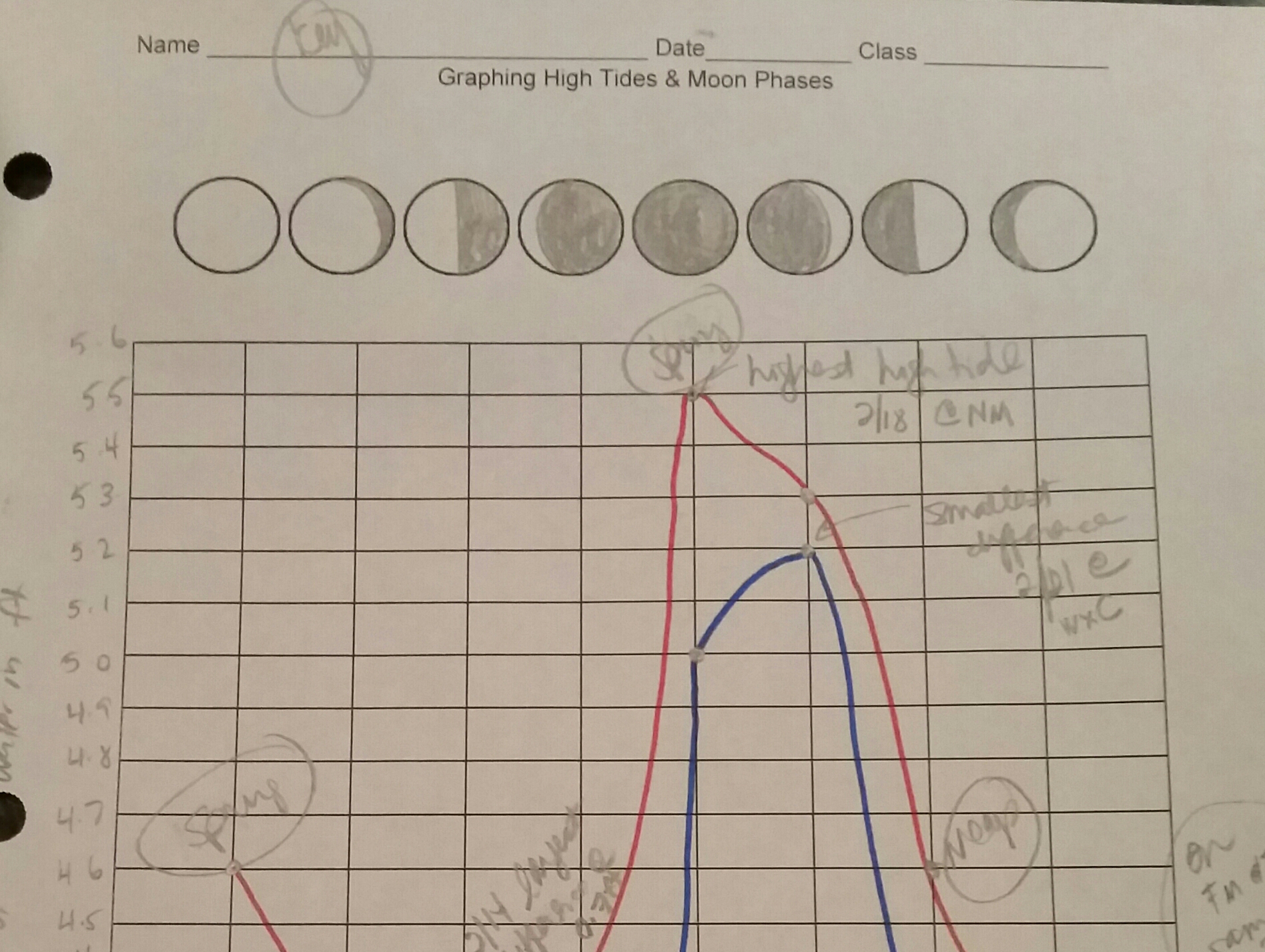

Local influences affect the actual timing of spring and neap tides, and therefore they may not align precisely with the phases of the moon. The smallest difference in height occurs at both first- and last-quarter moon phases, 4.72 ft.
MOON PLANET INFLUENCE OCEAN TIDE GRAPH FULL
The greatest difference in height occurs around new and full moons, 6.27 ft. The difference in sea-level height between each high and low tide changes daily depending upon the position of the Moon. At this location, there are two high and low tides daily, with one ebb and flow greater than the other. This graph shows the daily ocean level changes for May 2019 in Santa Barbara, CA. This is called a "spring" tide (from the water springing or rising up). When all three are in line (around full and new moons), the combined tidal effect of the Moon and Sun is at its greatest, resulting in the largest difference between high and low tide. Therefore, the north/south orientations of the bulge vary across the Northern and Southern Hemispheres during the 28-day orbital period.Īs the Moon completes one orbit around the Earth, the Earth, Moon, and Sun twice form a line and twice form a right angle. Additionally, the Moon's orbit is inclined 5° relative to the Earth's rotation. Likewise, the Earth's elliptical orbit around the Sun results in variations in the Sun's pull over the course of a year. Since tidal force increases with decreasing distance, tides are higher when the Moon is at its closest point to the Earth (called perigee) and lower at its farthest point (called apogee). Both orbits are not circles but ellipses, and as a result, the distance between the Earth and Moon can vary by up to 13,000 miles (31,000 km) over its 28-day orbit. The shape and orientation of the orbits of the Moon and the Earth also affect the tides. Other sites have mixed tides, in which successive high-water and low-water marks differ appreciably. As a result, some locations only experience one high and low tide each day, called a diurnal tide. The oceans and shorelines have complex shapes, and the depth and configuration of the sea floor varies considerably, all influencing the flow and movement of water. However, the actual change in daily tide level is affected by many additional factors that depend on location. Therefore, consecutive high tides are nearly the same height each time, regardless of whether the Moon is overhead or on the opposite side of the Earth. Since the difference in gravitational force is constant across the Earth, the bulge on both sides of the Earth is essentially the same. If this pull creates a bulge of water on the side of the Earth facing the Moon, then why is there also a bulge on the opposite side, away from the Moon? When we observe the tides, we are actually seeing the result of the Earth rotating under this bulge. As the Earth makes each 24-hour rotation, we pass under these areas where the tidal force acts on the water. The result of this tidal pull is a bulge in the ocean water on either side of the Earth, almost in line with the position of the Moon. However, because of the Moon’s much closer proximity, the Moon’s tidal pull on the Earth is over twice that of the Sun’s. Because of the larger mass of the Sun, its gravitational pull on the Earth is about 178 times stronger than the Moon’s gravitational pull on the Earth. Tides result from the pull of gravity from the Earth alone, between the Earth and the Moon, and between the Earth and the Sun.

The change from high to low tide is called the "ebb tide". The change from low to high tide is called the "flood tide" or “flow”. Tides are another type of wave motion – a change in the ocean water level that typically reaches a high and low twice a day, about six hours apart (called a semi-diurnal tide). Tsunami Preparedness and Mitigation: Individuals (You!).Preparedness and Mitigation: Communities.The Positive and Negative Side of Lightning.


 0 kommentar(er)
0 kommentar(er)
